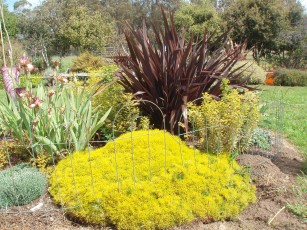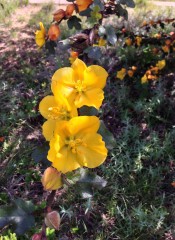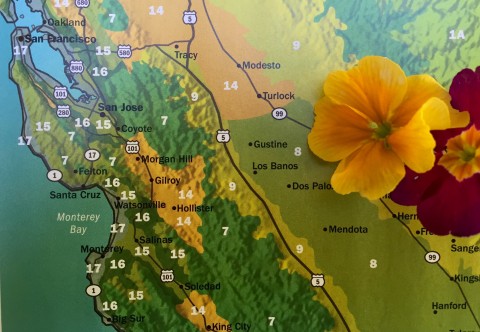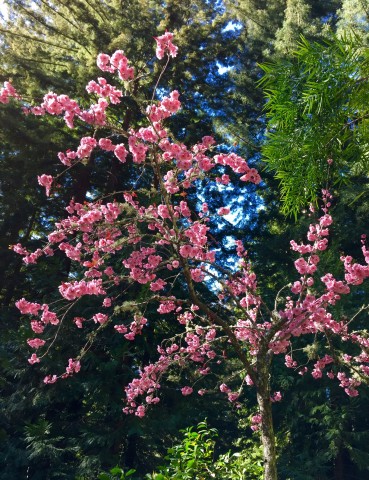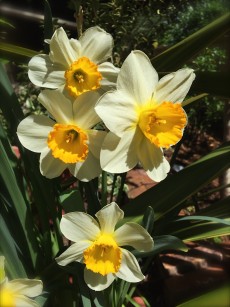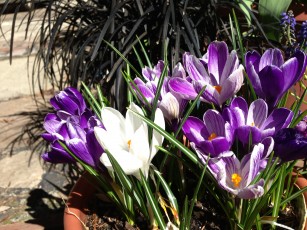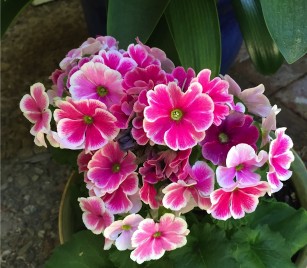Driving up Love Creek in Ben Lomond it?s hard to imagine the magnitude of the famous slide in 1982 that caused such devastation and loss of life. The ferns are lush now bordering the creek which flows to the San Lorenzo river. I?m on my way to visit an old friend, Chris Howe who is getting his bonsai collection ready for the Santa Cruz Bonsai Kai Club?s 28th Annual show coming up on the first weekend of April. We used to work together at a local nursery and I?m looking forward to seeing his plants.
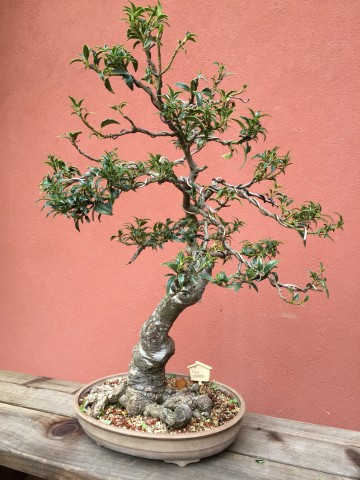
Chris first became interested in the art of bonsai about 15 years ago. Working in a nursery he could see the potential of overlooked, overgrown specimens with interesting trunks begging to to be styled into trees that look much older than their size suggests. To further his knowledge of this ancient craft he joined the Santa Cruz Bonsai Kai Club and was their president for four years.
Chris lives with his family, two dogs and some chickens on 14 acres so there is plenty of space to shelter his prized bonsai specimens as well as those in early training or waiting to attain that most sought after illusion of age. ?They?re never finished?, Chris laughed. He says his kids, Gloria, Ruby and Frederick, all show some interest in his hobby although the youngest is more apt to toss the ornamental rocks around than marvel at how old the bonsai look.
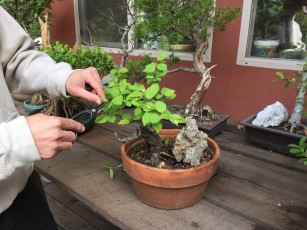
The word bonsai comes from two Japanese words that provide the most basic definition of this living art form. “Bon” means tray or pot, while “sai? means to plant. One of the reasons we all admire bonsai is how old they look -appearing to be veterans of years of struggle against natural forces. Some are actually hundreds of years old and handed down in families while others just look very old and some techniques help further this illusion.
Among his collection, Chris has an impressive Liquidambar orientalis he is hoping to enter into the show this year. Slow growing and native to the eastern Mediterranean regions of Turkey and the Greek island of Rhodes where large stands still grow, Chris methodically pinched every large leaf leaving the smaller ones. This technique will cause the tree to eventually produce only small leaves making the tree look older.
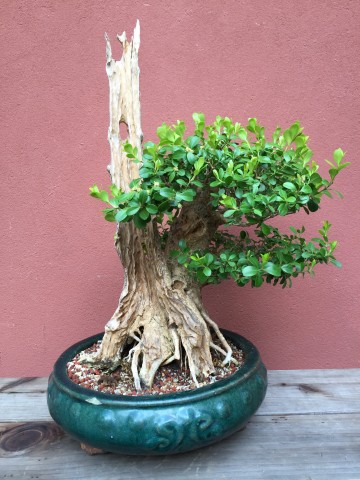
The boxwood is a shrub that lends itself to training. In addition to a couple boxwood that date back to his nursery days, Chris has a large specimen that was in the show last year and has been in his care for 10 years. it?s actual age is unknown. A technique called Jin which causes weathered-looking dieback on a branch and is created by stripping a branch of bark had already been initiated as was Shari which removes bark on part of the trunk. In nature, deadwood is created when a tree is hit by lightning, exposed to sustained periods of drought or when branches snap due to ice stress, wind or weight of snow. The wood dies off and is bleached by intense sunlight. This technique is almost exclusively used on evergreen trees, as creating Jin of Shari on deciduous trees often looks unrealistic
As living things, bonsai are always growing, leaves and stems being pinched, the branches wired into natural looking shapes, the trunks thickening and sometimes developing nebari or that most sought after look when the surface roots of the tree or root flare are visible above the growing medium. Included in Chris?s collection are a dramatic California buckeye, many Japanese maple, Chinese elm, ilex crenata and a tilia which is called a lime tree in the British Isles. He found the tilia many years ago thrown in some bushes behind an apartment complex in Santa Cruz. Chris speculates that the original owner bought the tilia as a finished bonsai but thought it was dead as it?s deciduous. You can never tell where a good bonsai will originate.
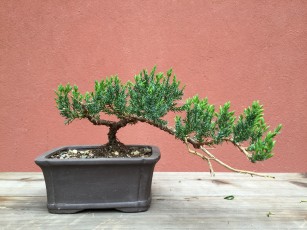
All the members of the club are busy getting ready for their annual show. Each decides which of their specimens they will offer for sale, contribute to the raffle or to enter into the show. Moss needs to be collected and placed over the soil and around the rocks in the pot, the correct base chosen to complement each specimen, training wires removed, pots cleaned and polished. Some members have styled and trained one of 20 small junipers the club bought last fall to sell in the raffle as a fundraiser. I thought Chris?s specimen turned out especially well and hope I?m the one who wins it at the upcoming show.
Don?t miss the upcoming 28th Annual Santa Cruz Bonsai Kai show Saturday, April 2nd and Sunday, April 3rd at the Museum of Art and History at 705 Front Street in Santa Cruz from 10am -5pm each day. Entry fee is $5 per person to the museum and the show.
Be inspired and have all your questions answered about growing bonsai from the experts. At 2:00 pm both days there will be a demonstration by the bonsai artist, Mike Pistello (Saturday )and bonsai sensei, Katsumi Kinoshita (Sunday). In the demonstrations, each will show where and how much to trim an ordinary piece of plant material, how to wire the branches to set their growth in the desired shape and how to pot the tree. The completed bonsai will be raffled afterwards.
Also at 1:00 pm both days, Carolyn Fitz, a SCBK member and Sumi-e brush painting artist, will present an ?Exclusive behind-the-scene: Japanese Bonsai Ink Painting.?
Come and enjoy an amazing exhibit of bonsai. For sale will be finished bonsai, pre-bonsai trees, pots and more. Door prizes, special entertainment and complimentary tea and cookies will be available as well as free advice from experienced members.
Every plant sold or raffled at the show comes with an invitation to the monthly Santa Cruz Bonsai Kai club meetings where new enthusiasts are welcomed and nurtured.

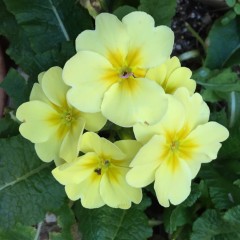
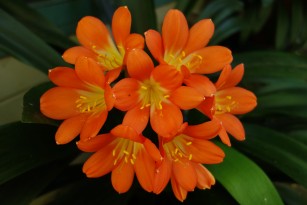
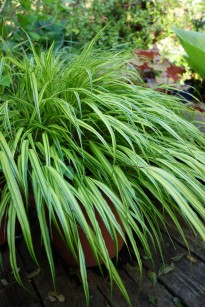
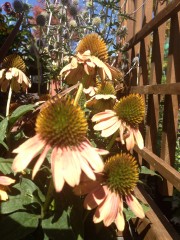 ant to add more vibrant colors to this area I?m looking to some of the new?echinacea or coneflower. From deep gold to pumpkin orange to red-orange sunset colors this perennial has medium water needs once established and is deer tolerant. I?m hoping the seed heads will attract more goldfinches to my garden if I don?t deadhead but allow the flowers to remain on the stalks throughout the summer and into the fall. I can also plant more California native grasses for the goldfinches like blue and yellow-eyed grass and festuca californica.
ant to add more vibrant colors to this area I?m looking to some of the new?echinacea or coneflower. From deep gold to pumpkin orange to red-orange sunset colors this perennial has medium water needs once established and is deer tolerant. I?m hoping the seed heads will attract more goldfinches to my garden if I don?t deadhead but allow the flowers to remain on the stalks throughout the summer and into the fall. I can also plant more California native grasses for the goldfinches like blue and yellow-eyed grass and festuca californica.